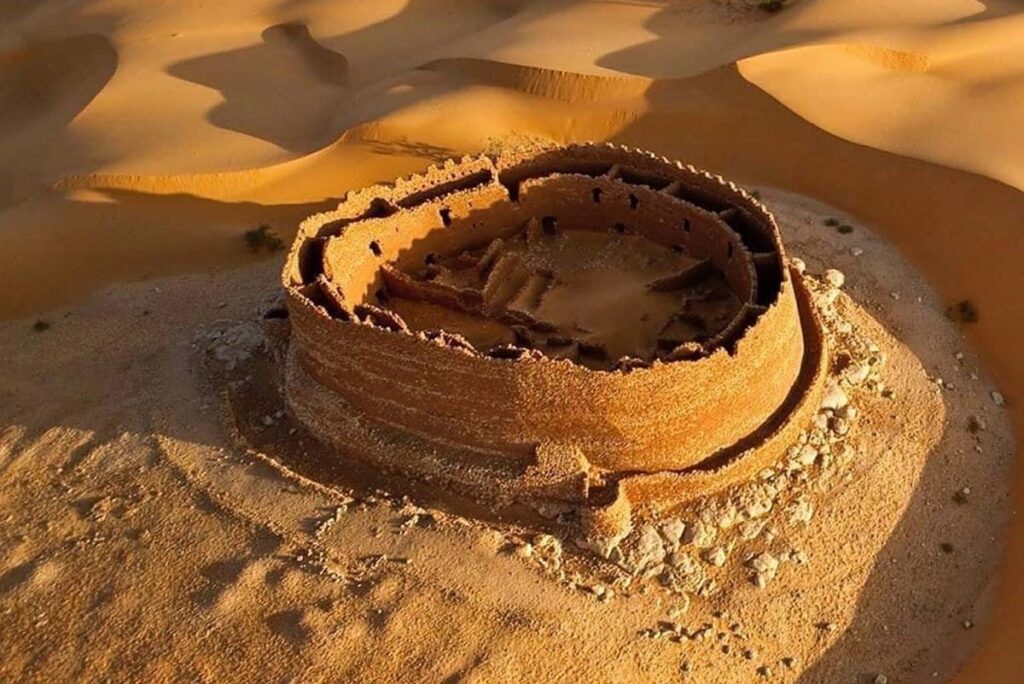
The Ksar Draa in Timimoun, Algeria, stands as a captivating enigma in the midst of vast dunes, its history shrouded in the sands of time. This ancient ruin, with its distinctive circular shape, has piqued the curiosity of many ArcheoTravelers and researchers alike. However, unlocking its secrets has proven to be a challenging endeavor, leaving many questions unanswered.
The ksar’s remote location makes visiting it a daunting task without the guidance of expert local guides. Yet, the allure of exploring its environments and witnessing its majestic view makes the journey worthwhile for those who dare.

The most pressing questions surrounding the Draa ksar revolve around its origins and purpose. Who built it, and for what reason? Regrettably, even the locals possess little information about this unique structure, except for the knowledge that it was once occupied by the Jewish community of the Timimoun region. But when did this occupation take place? What role did the ksar play during that period? Was it a fortified castle, a military outpost, a prison, or perhaps a caravanserai?
The surviving remnants of the ksar offer little insight into its original function. A two-meter-high circular wall surrounds the ksar’s exterior, comprised of an outer layer of stone and clay and an inner layer made solely of clay. Within this enclosure, a series of rooms spans three levels, suggesting the presence of internal stairways to access different floors. Strikingly, the rooms do not communicate with each other, and no outward-facing windows can be found.

One theory posits that the Draa Ksar might have served as a caravanserai, a type of building commonly found along desert trade routes. Traditionally, caravanserais provided a walled courtyard and a portico where caravans could rest and trade goods. These structures often accommodated travelers with rooms for their use, fostering cultural exchanges between diverse backgrounds. While caravanserais are emblematic of Persian culture, similar examples exist across North Africa, the Middle East, and the Near East. Some were built by master engineers affiliated with Sufi orders, who incorporated principles of golden geometry and proportionality, as seen in mosques.
Nevertheless, the Draa Ksar stands apart from the typical caravanserais that have been well-documented. Its distinct style raises further questions about its actual purpose and history.

Over time, the mysteries surrounding this building have sparked a myriad of hypotheses and spawned captivating legends. One intriguing tale involves an American expedition that ventured to Timimoun in the 1980s. Armed with local guides and supplies, the team embarked on a journey across the Tinerkourk Erg, navigating the sea of dunes until they reached the enigmatic ksar. The expedition requested solitude for a week, and what they sought or discovered within remains a secret shrouded in the sands.
As the years pass, the Ksar Draa continues to be a puzzle that has eluded resolution. Its allure draws adventurers and scholars, and its enigmatic nature stirs the imagination. Until more concrete evidence emerges, this ancient ruin will remain a captivating reminder of the mysteries that history occasionally conceals in the sands of time.

Leave a Reply